The recent attack on Commvault’s SaaS platform once again proves that hackers are advancing their approach. Instead of just targeting apps, they are now targeting the systems that build and deliver value to the large community and audience, such as SaaS applications. With SaaS products at the center of every business, customer need, and industry focus, this shift and the growing possibility of being targeted due to security gaps highlight the urgent need to rethink how we build and secure these platforms.
While SaaS opens new ways of doing business, it also brings new risks. Today, most software is built for the cloud first. With every new SaaS release, the potential for security gaps grows. That’s why security can’t be an afterthought. So, who can protect you here? The answer is clear: DevOps.
SaaS application security with DevOps implementation matters the most. In this blog, we will explore the importance of DevOps in SaaS app security, best practices, common security challenges and their solutions, and real-world examples.
The Importance of DevOps in SaaS Application Security That Cannot Be Overstated
We are living in a world where software is never truly “done.” It’s always evolving, always improving, and always live. To stay competitive, SaaS providers are adopting continuous delivery models while ensuring scalability to meet growing demands.
Unlike traditional software, SaaS platforms are dynamic, constantly bring out new updates, and are accessed by users across diverse geographies. This unstoppable evolution is also reflected in the market itself: the global SaaS market is projected to grow from $317.55 billion in 2024 to $1,228.87 billion by 2032. Such explosive growth highlights not only the increasing adoption of SaaS but also the urgency of addressing the security challenges that accompany it. On the other hand, DevOps are crucial for enhancing SaaS security throughout the development and deployment cycle. Let’s see how DevOps is involved in maintaining SaaS app security.
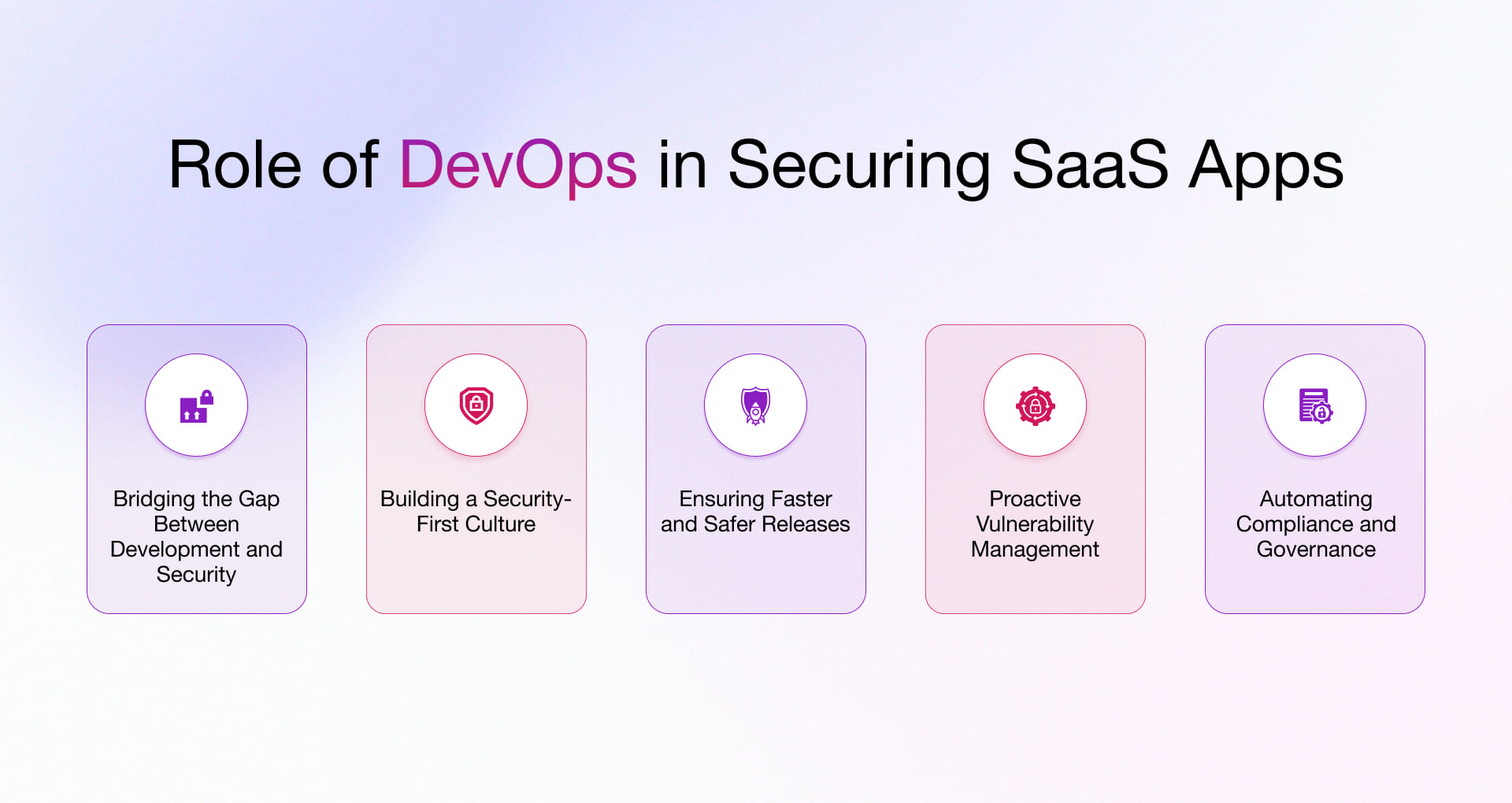
- Bridging the Gap Between Development and Security: For SaaS businesses, security gaps are like open doors in a crowded marketplace, inviting targets for threats and attacks. A disconnect between process development and key security aspects, where both run in parallel but do not interact, creates significant problems for businesses and user data. The adoption of DevOps keeps everything on course as it promotes collaboration within teams rather than working in silos, making it easier to address operational issues and decrease business risks. The emergence of DevSecOps has changed the overall approach by integrating security in every phase of the product/software lifecycle.
- Building a Security-First Culture: Cyberattacks don’t just affect systems or solutions; they damage a brand’s identity in the eyes of its customers. Security gaps don’t just slow you down, but they can stall long-term growth entirely. That’s why building a security-first mindset is necessary for all business verticals, including SaaS providers. And it’s not just about protecting the software you build. It’s also about drawing clear lines around your customers’ data. Security isn’t a ‘later’ thing. It’s an ‘always’ thing from that first planning meeting to the final rollout. When you bake it in from the start, you don’t just respond faster to threats, you build something better: a SaaS platform people trust, rely on, and recommend.
- Ensuring Faster and Safer Releases: For SaaS applications, delivering new features quickly is essential, but speed without security poses significant risks. DevOps addresses this by integrating security into every stage of the development pipeline. Through Continuous Integration and Continuous Delivery (CI/CD) pipelines, each piece of code undergoes automated security tests before it is ever released. Tools like Static Application Security Testing (SAST) and Dynamic Application Security Testing (DAST), catch vulnerabilities at an early stage, allowing teams to fix issues instantly before they become real problems to face. This automation prevents delays and avoids costly post-release fixes. For SaaS applications that serve global customers, faster and safer releases help maintain trust, reduce downtime, and give businesses a competitive advantage by ensuring innovation never compromises security.
- Proactive Vulnerability Management: In the fast-paced SaaS environment, reactive security is no longer enough. DevOps enables proactive vulnerability management by integrating continuous security checks throughout the development lifecycle. Shifting security left—introducing it early in the process—helps identify and address issues when they’re easier and more cost-effective to fix. Automated patching, real-time threat intelligence, and built-in vulnerability scanning during code development and deployment significantly reduce the attack surface. This not only strengthens security but also enables organizations to respond more quickly to emerging cyber threats.
- Automating Compliance and Governance: As SaaS-based businesses are significantly growing around the world, following rules like GDPR, HIPAA, and SOC 2 becomes trickier. Manual methods just can’t keep up with how fast things are made today. DevOps enables you to automate processes by following established rules, leveraging tools such as Infrastructure as Code (IaC), which converts policies into code and embeds compliance into it. These methods ensure that every time something new goes live, it adheres to the rules, allowing teams to easily demonstrate their work and stay compliant at all times. Doing things cuts down on people making mistakes and frees up teams to come up with new ideas. The upshot: companies can grow by following the rules built right into how they work every day.
Best Practices for Enhancing SaaS App Security With DevOps
When it comes to securing SaaS applications with DevOps to strengthen security, just like any other technology adoption, it requires a strategic and streamlined process to ensure successful execution. DevOps has evolved from being merely a technical approach to becoming a business-critical strategy, demanding systematic and organization-wide adoption.
To make the process smoother for SaaS product development and providers, here are the key SaaS security best practices through DevOps to focus on creating a strong layer of protection.
- Secure Development: Stick to secure coding rules and use Static Application Security Testing (SAST) to spot weaknesses. Regular code checks with a security list further boost code strength and cut down risks before launch.
- Automate Security Testing: Add automated security testing to CI/CD pipelines using SAST, Dynamic Application Security Testing (DAST), and Software Composition Analysis (SCA). Automation helps find vulnerabilities faster without slowing down releases, keeping both speed and safety intact.
- Strong Identity and Access Management (IAM): Manage access using the least privilege rule and Multi-Factor Authentication (MFA) for all users’ admins. Regular checks of access permissions help remove unnecessary rights, shrinking the attack surface and guarding sensitive customer data.
SaaS App Security Issues and How DevOps Helps Address Them

Insecure APIs:
APIs are the hidden doorways of modern SaaS applications. They connect services, users, and data. But poorly designed APIs are like leaving your SaaS software front door unlocked.
How DevOps helps
DevOps teams write tests that automatically check those doors or boundaries before they get opened. If a lock is missing, the build fails. Simple. Predictable. Safe.
Data Leaks in Multi-Tenant Systems
Most SaaS platforms are built on a multi-tenant model, which means multiple customers share the same system. In this case, the boundaries between them must be precise and functional. Otherwise, someone ends up seeing what they shouldn’t and gaining access to something critical.
How DevOps helps
With automation, these boundaries aren’t left to guesswork. Teams write code to define how environments should be built. That code is checked, reviewed, and tested automatically every time.
Misconfigured Cloud Infrastructure
Misconfigurations are usually accidents. But attackers don’t care about intent they only see the opportunity.
How DevOps helps
Automated scanning tools comb through every cloud resource before it’s live. Think of it as proofreading, but for your entire infrastructure.
Compliance Failures
We all know that for SaaS businesses, regulations like GDPR, HIPAA, or SOC 2 are mandatory. So it’s not enough to say “we follow the rules,” you have to prove it, over and over again. And with regulations changing constantly, staying compliant manually is exhausting.
How DevOps helps
DevOps builds the rules into the way a SaaS application gets built. If something breaks compliance, the system informs you before customers ever notice and point out.
Delayed Response to Threats
Most security incidents in SaaS platforms are not the result of a single mistake, but of slow responses to it that create a big damager.
How DevOps helps
By linking monitoring tools to development workflows, teams get alerts the moment something strange happens. And because they’ve practiced this as part of their process, they know what to do next.
Real-World Implementations of DevOps in Securing SaaS Applications
Every brand, platform, and business solution provider faces the constant fear of cyberattacks and security breaches. To overcome this fear and strengthen their bottom line, adopting DevOps has proven to be one of the smartest decisions for many organizations in order to achieve SaaS app security. And with Rishabh Software’s expertise in DevOps services and solutions, we can help you achieve the same: building secure, scalable SaaS applications tailored to your business needs.
Salesforce – CI/CD with Embedded Security: Salesforce has integrated security directly into its CI/CD pipelines. Tools automatically scan code and infrastructure changes for vulnerabilities before deployment, ensuring that SaaS CRM updates are safe by default.
Impact: Quicker releases with reduced security risks.
Netflix – Infrastructure as Code & Simian Army: Netflix, the well-known streaming platform, also manages large internal SaaS tools. They use Infrastructure as Code (IaC) and their famed Simian Army (Chaos Monkey, Security Monkey) to automatically detect misconfigurations and prevent potential security issues.
Impact: Stronger, more resilient SaaS environments.
Intuit – Automated Compliance in FinTech SaaS: Intuit’s DevSecOps team took the initiative to embed compliance directly into their SaaS development process. As a result, automated checks enforce security and compliance early, reducing the chances of last-minute audit surprises.
Impact: Ongoing compliance and reduced risk for financial SaaS products.
Shopify – Real-Time Security Monitoring for SaaS Stores: Shopify, the global e-commerce platform, took a bold and successful step by integrating real-time security monitoring and automated alert systems into its DevOps workflows. Their SaaS infrastructure uses advanced tools to detect threats like DDoS attacks before they escalate.
Impact: Faster incident detection and improved trust for merchants and buyers.
Partner with Rishabh Software to Ensure DevOps Success in Securing Your SaaS Application
We are well-versed in combining know-how in DevOps methods and SaaS development services to help businesses create safe, expandable, and well-equipped apps, platforms, and software. We assist you beyond just coding; we team up with you as your development partner. Our experts ensure that your SaaS product is built on new ideas and safety at its core, from conceptualizing innovative features to designing secure, high-performing structures. By choosing us as your tech partner, you choose operational excellence, uncompromised security, and the confidence to build and scale your SaaS solution successfully.
Frequently Asked Questions
Q: Why Does SaaS Security Matter?
A: Because cloud-native architectures inherit a concept of shared responsibility, SaaS security matters. Cloud service providers secure the infrastructure and some security for the data; however, the data risk, access control, and application logic security rest in your hands. Poor SaaS security opens you up to lateral movement risk, if one app gets breached by an attacker, they could use other integrations to move around in your ecosystem, exposing your entire digital ecosystem.
Q: How Does DevOps Facilitate Secure Application Development?
A: By shifting security left and integrating it in the design phase, DevOps incorporates security rather than adding it as an added layer. Platforms that automate compliance checks, threat modeling, and secure infrastructure provisioning help engineering teams kill risk before it ever reaches production and the real world. In fact, securing code is not enough; building secure systems by default matters.
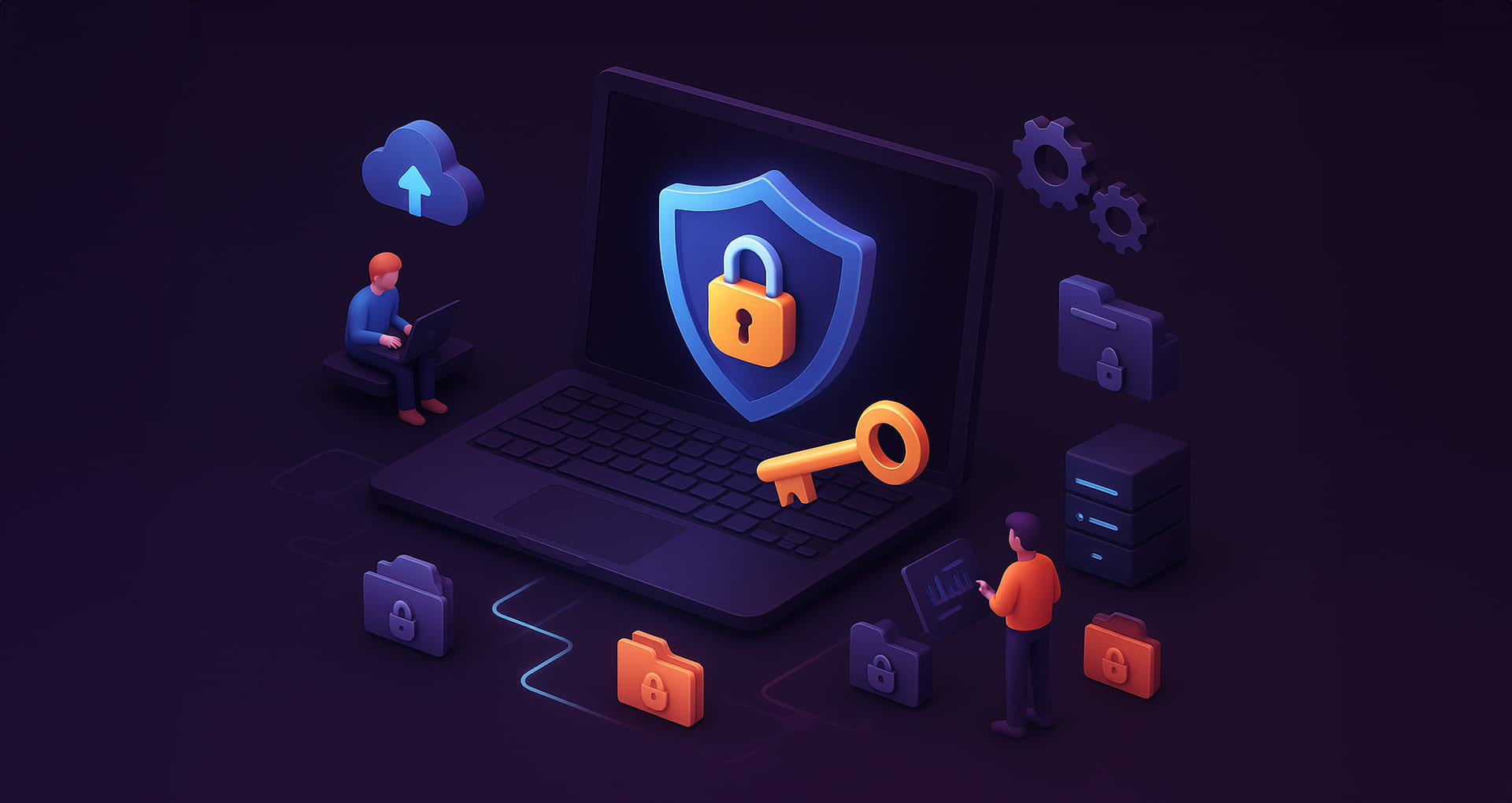

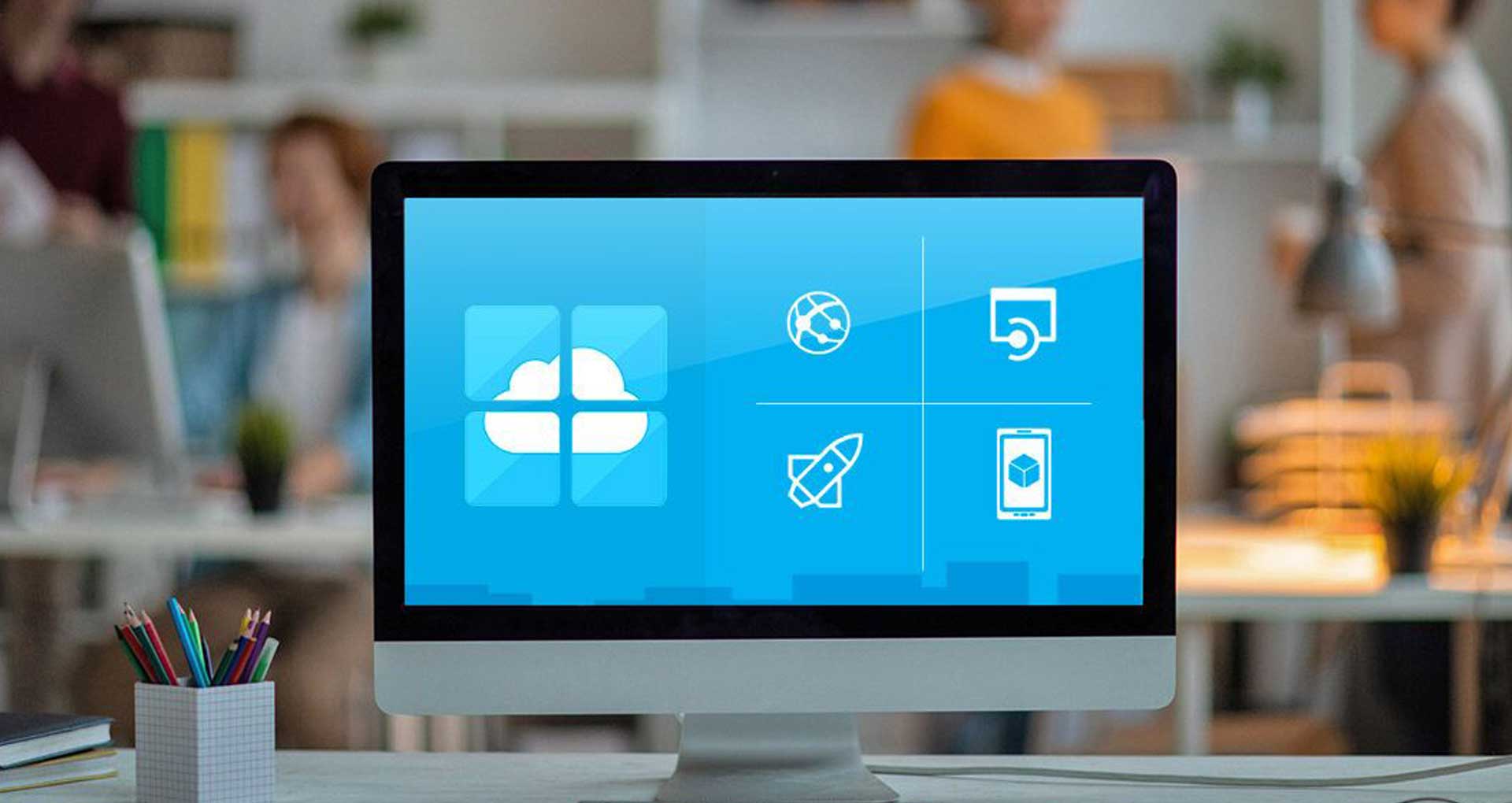
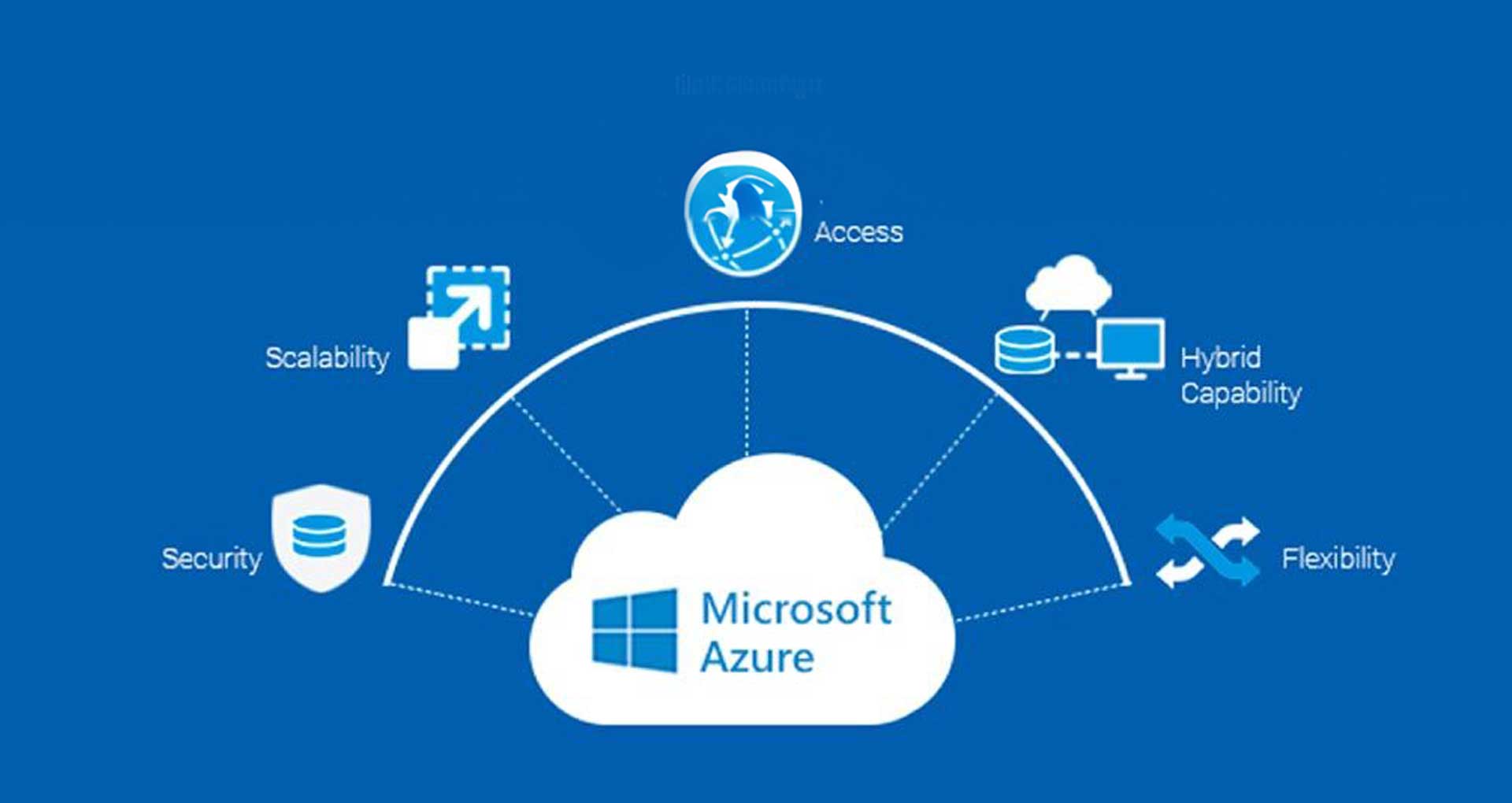
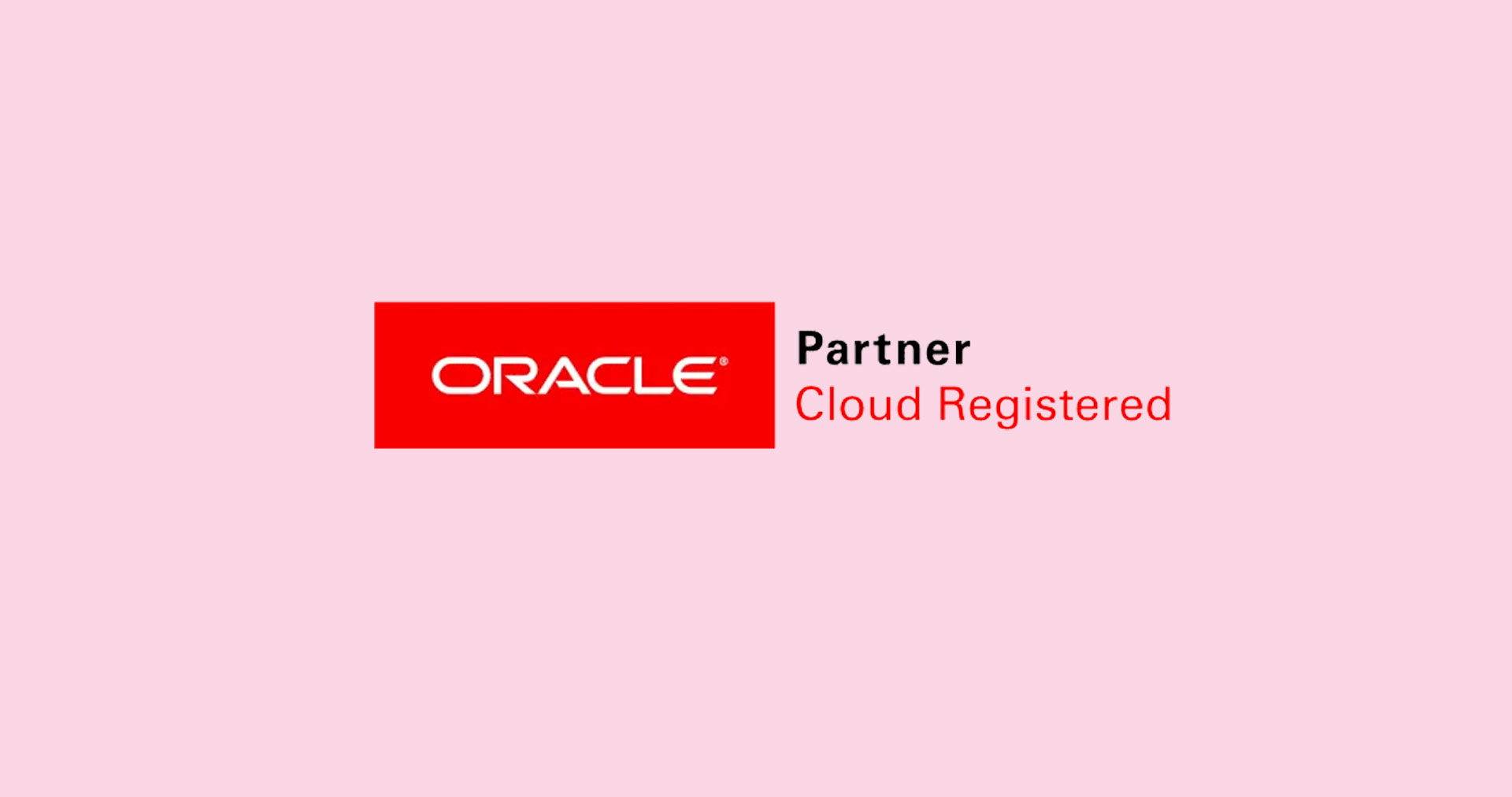






 30 Min
30 Min


